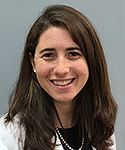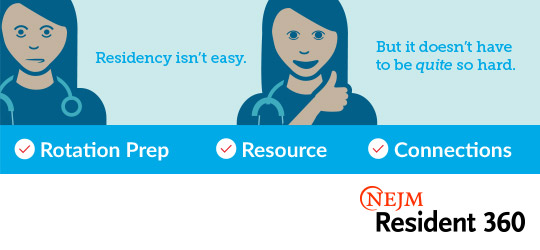April 30th, 2021
Riding the Second Wave
Stephanie Braunthal, DO
I just finished attending one of our inpatient teaching services, and it felt like the panel was one of the most varied and medically complex I have ever taken care of. This was my first week as an inpatient attending — as an ambulatory chief, most of my clinical time is with the residents in longitudinal clinic — and as each day brought new challenges to reason through, I kept asking myself, “Am I just rusty, or is something actually different?”
Midway through the week, I started to sense the answer was the latter. We admitted a patient for further management of multiple complications from a prolonged COVID-19 hospitalization. On the same day, one of our patients who had been with us for several days revealed she had been diagnosed with a hematologic disorder before the pandemic, but had been forced to stop treatment because it was deemed nonessential. That night, I realized almost all of my patients either had symptoms that had not been worked up because they did not see a physician (or in one case, a dentist) during the past year; because intervention had been delayed due to a freeze on nonessential services; because of long-term complications from COVID-19; or, in one case, because of a reaction to a COVID-19 mRNA vaccine. None of our patients were actively being treated for COVID-19, however the pandemic had contributed to each of their hospitalizations.
Disaster medicine experts could have predicted this composition of patients on my team, as well as the increasingly complicated patients presenting to my clinic. In “Delayed Primary and Specialty Care: The Coronavirus Disease-2019 Pandemic Second Wave,” Weinstein et al. write:
The second wave will comprise patients with chronic illness who have patiently waited to reschedule or schedule their primary or specialty care appointment to refill medications, obtain durable medical equipment, and undergo surveillance laboratory or imaging studies to gauge effectiveness of titrated therapy. This will include patients who have waited and have symptoms, signs, and other indicators of a serious illness that requires a timely diagnosis to maximize effective treatment. This will include the patients with mental illness or substance abuse who have had their outpatient treatment routines disrupted while doing their best to accept their individual, family and community stress. Eventually, these patients will need care and, like the COVID-19 response, there will be an exponential curve of presentations and consequences of delayed care: the second wave.1
Published in Disaster Medicine and Public Health Preparedness in May 2020, the piece is a proactive call to action, outlining tactics based on proven natural disaster recovery frameworks that American healthcare institutions can use to prepare for this secondary surge of patients as they simultaneously work to rebuild their functional and financial capacities. Vital to the U.S. healthcare delivery system and deeply affected by the pandemic, residency programs might find many of these strategies helpful and directly applicable. Paraphrased examples include identifying those needed to care for acute COVID-19 patients, determining the duration of redeployment needs, creating a timeline to return to pre-pandemic functional status, keeping the non-redeployed up to date on COVID-19 best practices so that they can easily transition into the acute management role, adopting telehealth, and finding ways to protect the physical and mental health of their trainees.
 Residency programs will also face unique challenges from the second wave, which they should anticipate as they prepare for the upcoming academic year. They should be aware of their institution’s social distancing protocols in order to request any necessary ancillary workspaces or workstations for the residents. Knowing this information will also help plan for the transition from virtual to in-person lectures. They need to recognize that the means by which hospitals and clinics work to recover from the losses of the past year will undoubtedly have an effect on their programs. Complex patients require more time and attention. Residency programs will likely be asked to provide more house staff to account for increased clinical demands, with additional needs in transient times of redeployment or employment freezes. The more the residents are relied on for functional capacity, the stricter time-away policies will have to be. Strategies to navigate interview season, parental leaves, and medical leaves will be of particular importance. Finally, they will need to find creative ways to support wellness, research, and education, as ongoing budgetary restrictions might continue to limit funds for these initiatives.
Residency programs will also face unique challenges from the second wave, which they should anticipate as they prepare for the upcoming academic year. They should be aware of their institution’s social distancing protocols in order to request any necessary ancillary workspaces or workstations for the residents. Knowing this information will also help plan for the transition from virtual to in-person lectures. They need to recognize that the means by which hospitals and clinics work to recover from the losses of the past year will undoubtedly have an effect on their programs. Complex patients require more time and attention. Residency programs will likely be asked to provide more house staff to account for increased clinical demands, with additional needs in transient times of redeployment or employment freezes. The more the residents are relied on for functional capacity, the stricter time-away policies will have to be. Strategies to navigate interview season, parental leaves, and medical leaves will be of particular importance. Finally, they will need to find creative ways to support wellness, research, and education, as ongoing budgetary restrictions might continue to limit funds for these initiatives.
A beach lover from New England, I have spent much time wading in the Atlantic Ocean, anxiously awaiting the moment when that first wave crashes over me, knocking me off balance and chilling me to my core. Yet, as I endure successive waves, my feet root in the sand, and my body temperature adapts. To me, the second wave of the pandemic is aptly named. We are recalibrating to a post-acute COVID-19 world, and in spite of a surge of upcoming obstacles, there is also much to embrace. Taking care of these patients forces us to grow clinically and provides ample opportunity for bedside education. Furthermore, the universality of the pandemic has given us shared experiences that allow us to connect with our patients in a way that we previously could not. We just have to make sure we prepare for what is to come. Otherwise we will be swept away with the tide, and it will be difficult to make it back to shore.
- Weinstein E et al. Delayed primary and specialty care: The coronavirus disease–2019 pandemic second wave. Disaster Med Public Health Prep 2020 Jun; 14:E19. (https/doi.org/10.1017/dmp.2020.148)




Stephanie, love how you extend the ocean wave analogy, including suggestions on how to “root our feet in the sand” and prepare so that subsequent waves don’t knock us down. Definitely necessary to get through the recovery phase.